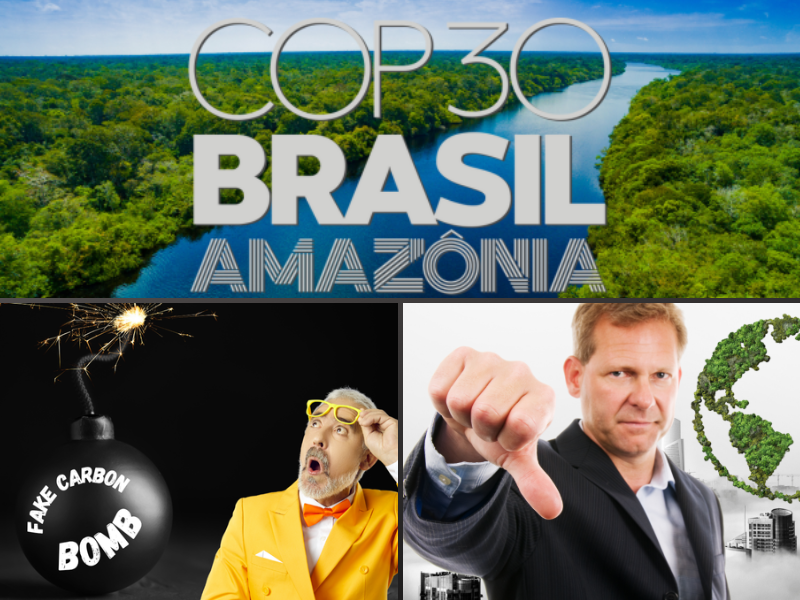A new study from The Heartland Institute finds roughly 96 percent of the temperature stations in the United States used to measure climate change fail to meet the National Oceanic and Atmospheric Administration’s (NOAA) standards for acceptable and uncorrupted placement.
The U.S. surface temperature record is determined from data gathered by the Cooperative Observer Network (COOP), administered by NOAA’s National Weather Service (NWS) division. Data are then compiled and presented to the public for climate change tracking by the National Centers for Environment Information (NCEI), formerly known as the National Climatic Data Center (NCDC).
The report was compiled via satellite and in-person survey visits to NOAA weather stations measuring the “official” land temperature data in the United States. These visits show these stations are corrupted by localized effects of urbanization – producing heat-bias because of their close proximity to asphalt, machinery, and other heat-producing, heat-trapping, or heat-accentuating objects. Placing temperature stations in such locations violates NOAA’s own published standards, and strongly undermines the legitimacy and the magnitude of the official consensus on long-term climate warming trends in the United States.
NOAA’s “Requirements and Standards for Climate Observations” instructs that temperature data instruments must be “over level terrain (earth or sod) typical of the area around the station and at least 100 feet from any extensive concrete or paved surface,” and that “all attempts will be made to avoid areas where rough terrain or air drainage are proven to result in non-representative temperature data.” However, as detailed in the report, these instructions are regularly violated.
This new report is a follow up to a March 2009 study, “Is the U.S. Surface Temperature Record Reliable?,” which highlighted a subset of over 1,000 surveyed stations and found 89 percent of stations had heat-bias issues. In April and May 2022, The Heartland Institute’s team of researchers visited many of the same temperature stations as in 2009, in addition to new sites.
The new survey sampled 128 NOAA stations, ultimately finding the problem of heat-bias has only worsened. Of those stations visited in April and May of 2022, 80 were U.S. Historical Climatology Network (USHCN) stations, a subset of the COOP network—most of which were visited in the original report. The overall sample is broadly representative of the entire network, as it samples stations in a variety of U.S. states. Regional samples comprising many nearby stations were done in the western and southeastern United States, focusing on Alabama, California, Florida, Georgia, Idaho, Montana, Nevada, Oregon, and South Carolina.
Of the 128 stations surveyed, only two were found to be a Class 1 (best-sited) stations: Dubois, the Idaho Agricultural Experiment Farm, and the Louisiana Agricultural Experiment Farm. Just three stations were found to be Class 2 (acceptably sited), while the remaining 123 stations were found to be Class 3, 4, and 5, and therefore considered unacceptably sited.
“With a 96 percent warm-bias in U.S. temperature measurements, it is impossible to use any statistical methods to derive an accurate climate trend for the U.S.” said Heartland Institute Senior Fellow Anthony Watts, the director of the study. “Data from the stations that have not been corrupted by faulty placement show a rate of warming in the United States reduced by almost half compared to all stations.”
The findings of both the 2009 and the 2022 Surface Stations studies clearly demonstrate the COOP network’s temperature records—at both USCHN and GHCN stations—have been substantially corrupted. Claims by NOAA, NCDC, and NCEI that this data contamination can be statistically adjusted are disingenuous, especially considering the widescale homogenization of good and bad data. Good data exists in the unperturbed stations, but the amount of bad data from poorly sited stations overwhelms the accurate data from well-sited stations.
The study recommends NOAA/NWS should fully implement recommendations made by the U.S. Office of the Inspector General and Government Accountability Office on the state of the USCHN and apply those recommendations s to the entire COOP network, as well as immediately cease temperature data collection operations at waste-water treatment plants. These facilities have grown significantly in size and treatment volume over the past century as the U.S. population has grown, adding large heat sink capacity as well as waste heat of sewage digestion to the long-term temperature record.
Further, beyond modernizing the COOP network, a central authority, rather than the ad hoc collection of competing interests, should be created to evaluate stations and determine if they adhere to standards and produce suitable data. The authority should have the power to upgrade or close stations that cannot be brought into compliance.
The following documents provide more information about temperature station data collection and climate change.
Corrupted Climate Stations: The Official U.S. Surface Temperature Record Remains Fatally Flawed
https://heartland.org/wp-content/uploads/documents/2022_Surface_Station_Report.pdf
This Heartland Institute study finds approximately 96 percent of U.S. temperature stations used to measure climate change fail to meet what the National Oceanic and Atmospheric Administration (NOAA) considers to be “acceptable” and uncorrupted placement by its own published standards.
Is the U.S. Surface Temperature Record Reliable?
https://heartland.org/wp-content/uploads/documents/SurfaceStations.pdf
This 2009 report, by meteorologist Anthony Watts, presented the results of the first-ever comprehensive review of the quality of data coming from the National Weather Service’s network of stations and found 89 percent of the stations failed to meet the National Weather Service’s own siting requirements.
Climate Change Reconsidered II: Fossil Fuels – Summary for Policymakers
https://heartland.org/publications-resources/publications/climate-change-reconsidered-ii-fossil-fuels—summary-for-policymakers
In this fifth volume of the Climate Change Reconsidered series, 117 scientists, economists, and other experts assess the costs and benefits of the use of fossil fuels by reviewing scientific and economic literature on organic chemistry, climate science, public health, economic history, human security, and theoretical studies based on integrated assessment models and cost-benefit analysis.
Climate Change Reconsidered II: Physical Science
https://heartland.org/publications-resources/publications/climate-change-reconsidered-ii-physical-science
Climate Change Reconsidered II: Physical Science is an independent, comprehensive, and authoritative report on the current state of climate science, published in October 2013. It is the fourth in a series of scholarly reports produced by the Nongovernmental International Panel on Climate Change, an international network of climate scientists sponsored by three nonprofit organizations: the Center for the Study of Carbon Dioxide and Global Change, the Science and Environmental Policy Project, and The Heartland Institute. (Also see the “Summary for Policymakers” of Climate Change Reconsidered II: Physical Science: https://heartland.org/wp-content/uploads/documents/CCR/CCR-II/Executive-Summary.pdf)
Climate Change Reconsidered II: Biological Impacts
https://heartland.org/publications-resources/publications/climate-change-reconsidered-ii-biological-impacts
Released on April 9, 2014, Climate Change Reconsidered II: Biological Impacts is an independent, comprehensive, and authoritative report on the impacts of climate change on plants, terrestrial animals, aquatic life, and human well-being. (Also see the “Summary for Policymakers” of Climate Change Reconsidered II: Biological Impacts: https://heartland.org/wp-content/uploads/documents/CCR/CCR-IIb/Summary-for-Policymakers.pdf)
Nothing in this Research & Commentary is intended to influence the passage of legislation, and it does not necessarily represent the views of The Heartland Institute. For further information on this subject, visit Environment & Climate News, The Heartland Institute’s website, and PolicyBot, Heartland’s free online research database.
The Heartland Institute can send an expert to your state to testify or brief your caucus; host an event in your state; or send you further information on a topic. Please don’t hesitate to contact us if we can be of assistance! If you have any questions or comments, contact Heartland’s Government Relations department, at [email protected] or 312/377-4000.





